COOK BOOK:
We know form working through the first harmonic functions page that every key has 8 dominant chords
Harmonic Functions PageLet's work in the green hypercube
The key of F has C major as its regular dominant (chord V)
And then all the other 7 orange chords are also dominant to F

But before we start,
is that it doesnt tell you what kind of chord you need to play
Dominant chords (whether the tritone sub or the backdoor) traditionally have the b7th added
But in metaharmony they could have a major 7th instead for example
These orange chords are dominant to F major simply because they're orange (scroll up to chart)
we can add any other notes on top of that if we please, whether the b7 or the ^7 or beyond
we no longer have certain chord extensions bound to certain functions
the colours give freedom
Starting with the major dominants (we'll skip the regular dom, C maj)
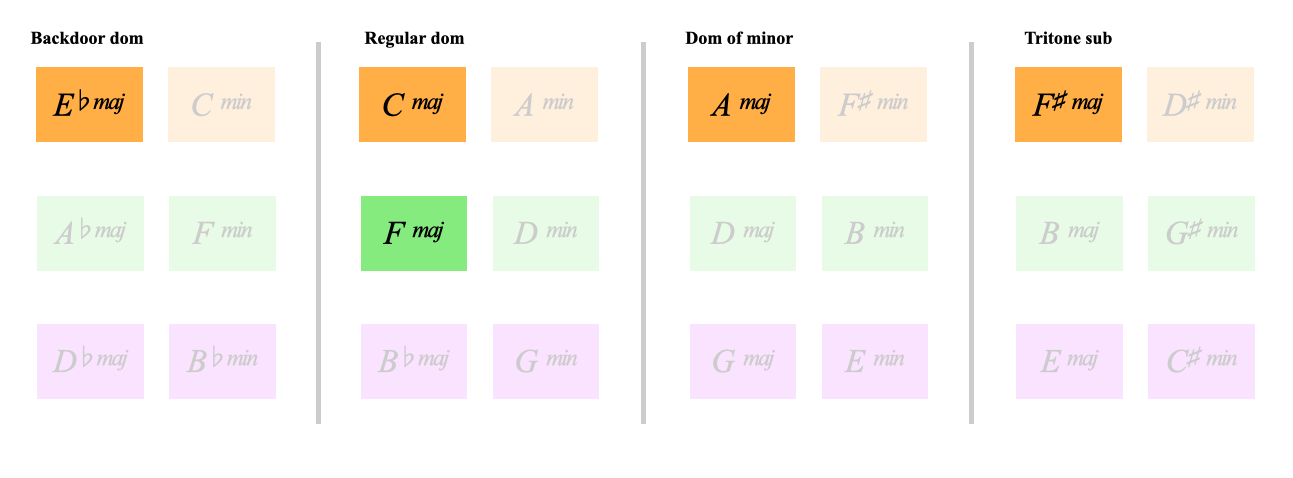
First one,
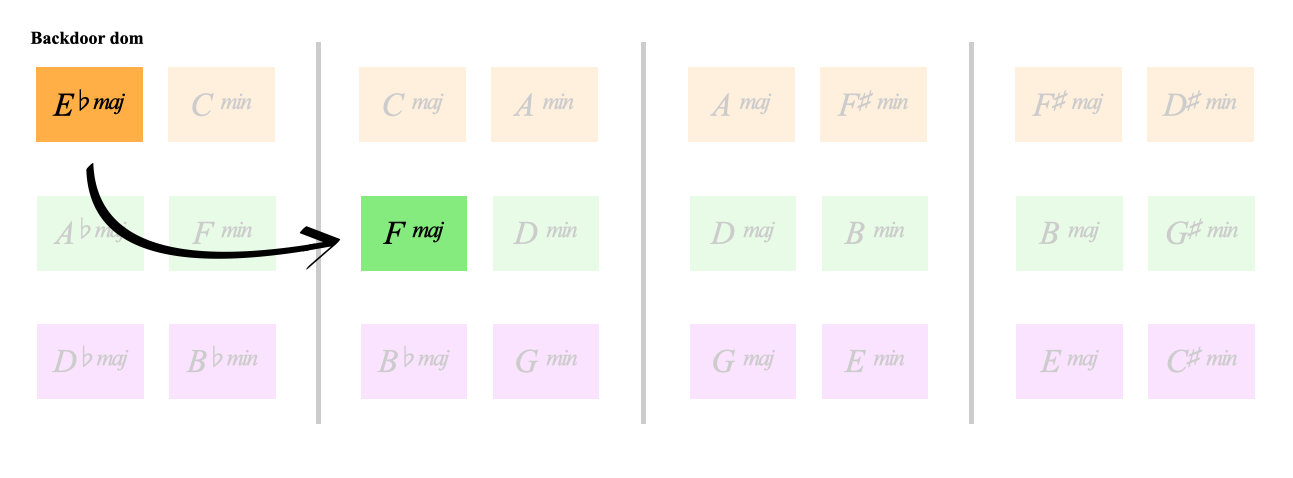
Here's a I-IV-vi-V progression in F
The second time round we swap the V with the backdoor dominant, Eb^7
F^7 Bb^7 Dm7 C
F^7 Bb^7 Dm7 Eb^7
The ^7 backdoor dominant is so beautiful and Summery
This ^7 backdoor dominant could also be seen through the lens of modal mixture
Advanced colour page coming soon
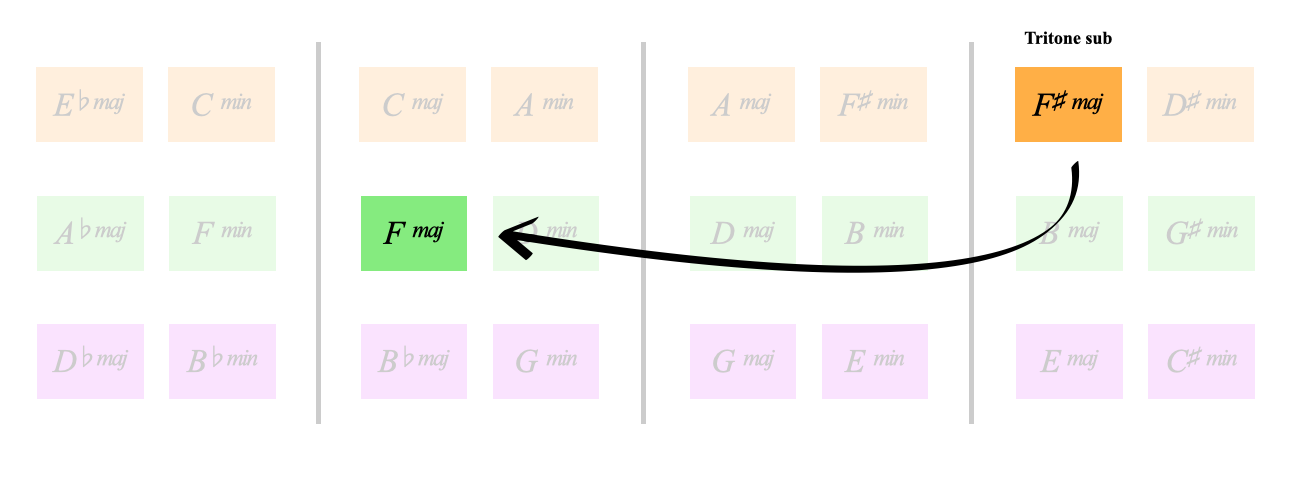
I'm sticking with the ^7 vibe for this one
We've got a vamp between the Tonic and the tritone dominant
and then a mini B section using some diatonic chords, resolving back via Gb^7
To me this movement is beautiful in a haunting, apocolyptic way
As if we're somewhere mysterious and dangerous but beautiful
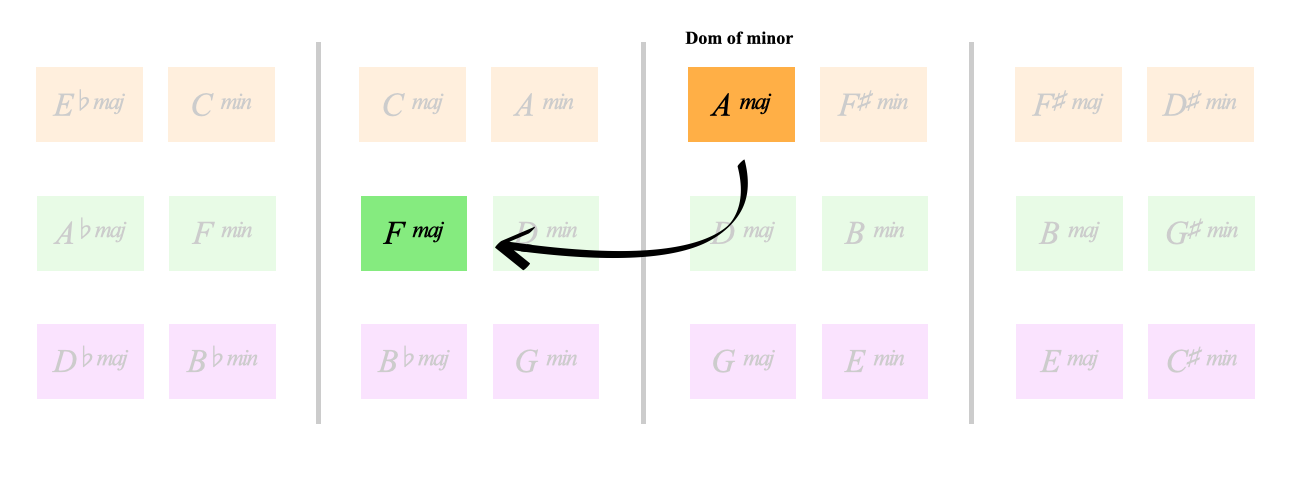
I love this resolution, so underused
We're just vamping between chord I and the major III
F^7 Aadd11
We've got A major add 11 which is just so bright and beautiful
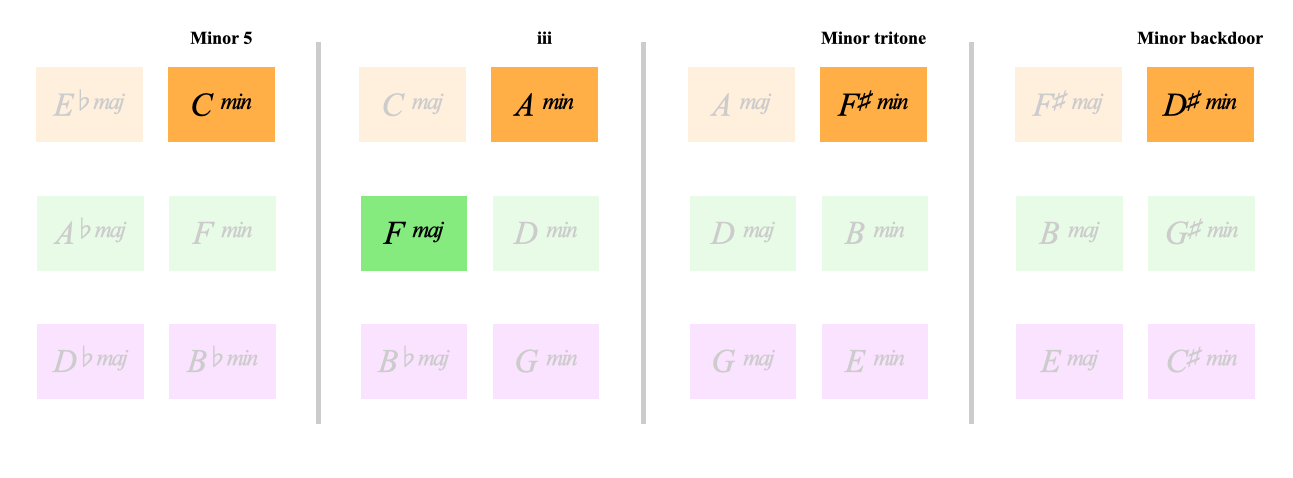
I love these!
They're not generally thought of as 'dominant'
They're very underused (especially the minor backdoor and tritone)
Let's hear some ideas I came up with using them:
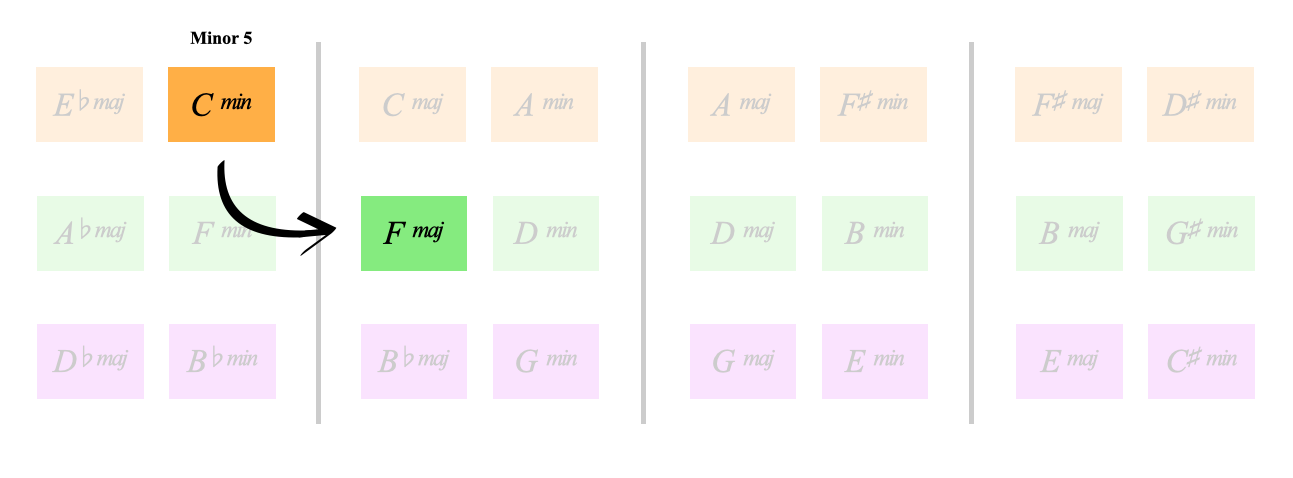
Here we're just playing between chord I, F^7 and the minor v, Cm
I love the slight darkness this chord has
It makes the tonic major sound just that little bit more bright and delightful in contrast
The first recording is just the chords, the next is a riff
I made this riff in 5/8 time signature going between F^7 and Cm11

A controversial one!
Some say that chord iii has tonic function
But I disagree for two reasons
firstly its orange here
and the green hypercube says orange chords are dominant to F major
secondly it has the leading tone of F major in it (E natural)
Which pulls back up to F
Let's first hear the cadence of iii resolving to I:
to my ear, that is undeniably a dominant cadence of some sort
Now let's hear it in a progression:
This progression goes F^7, Am7, F^7, Gm7, Am7, F^7
I love using this iii I cadence to change into new keys, stay tuned for some Cook Book on that
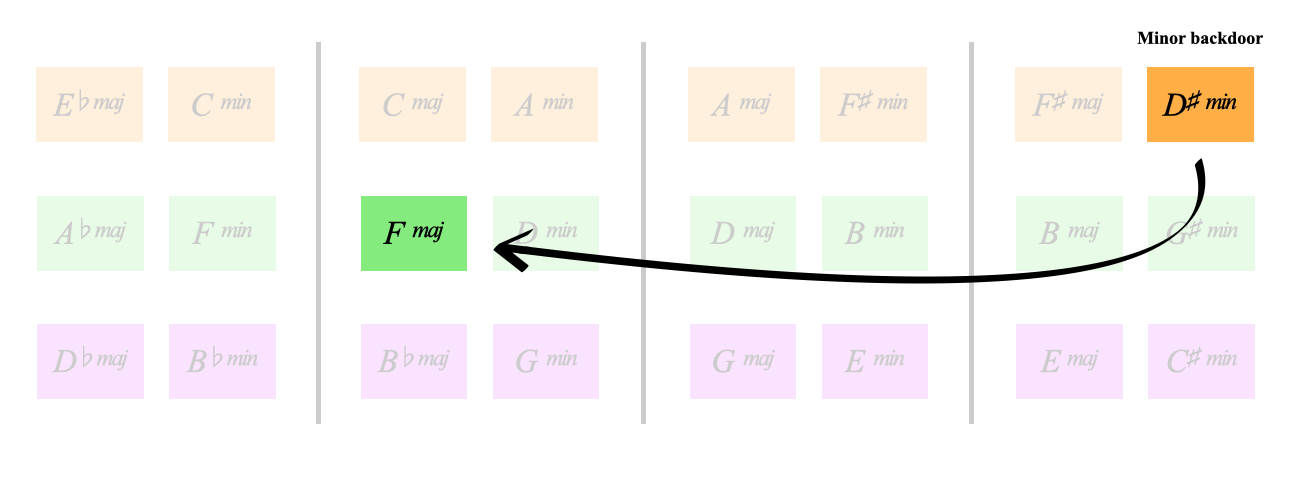
love this one
Let's first hear it in a progression
We're going: F^7, Ebm7, Dm7, Bb^7
This riff goes between chord I, and Ebm9
Love how strongly the F^7 feels like tonic
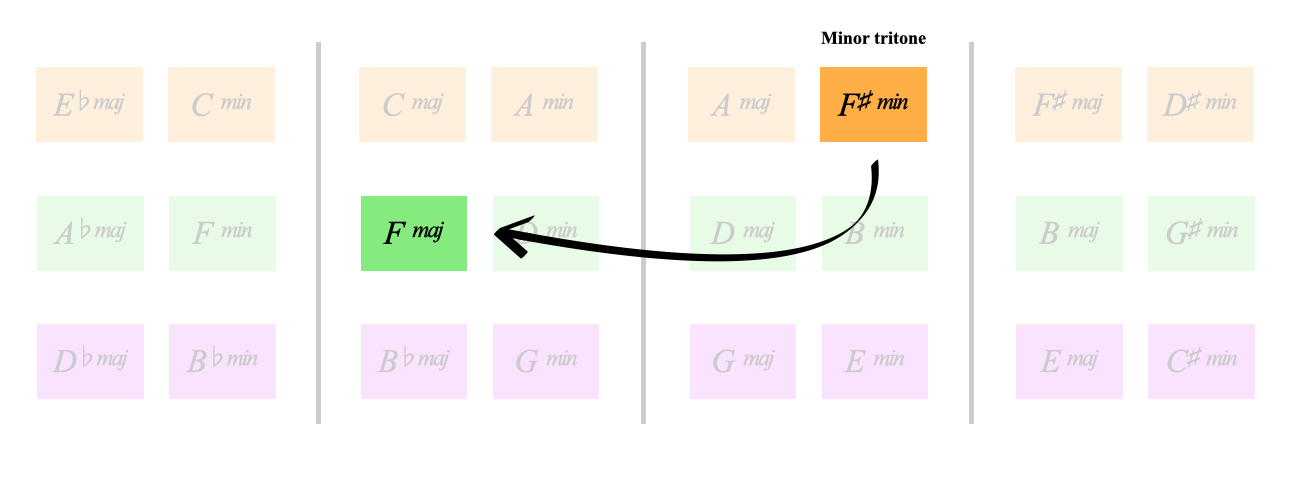
This is a beautiful one
Let's first hear it in a progression:
F^7, Gbm7, F^7, Gm7, with a little diatonic B section
I love the movement from F^7 up to Gbm7
And then in a riff:
In this riff I'm trying to obscure the 'semitone above' feeling of the chord by heavily accenting the 3rd in the bass
and then we go to chord IV Bb major and use Gbm7 to get back to F
I wrote another chord progression again trying to obscure the 'semitone above the root' feeling
F^7 Bb^7 Gbm7 Gm9
You could say this is just a chromatic approach of chord ii
but I think it really holds its own harmonic space, identity and function in the progression
TABS/NOTATION COMING SOON
So that's me sharing a little exploration of each of the 8 dominants
Theres still so much more to do with each of them
and so many ways to express with them
But what about all the subdominants?
